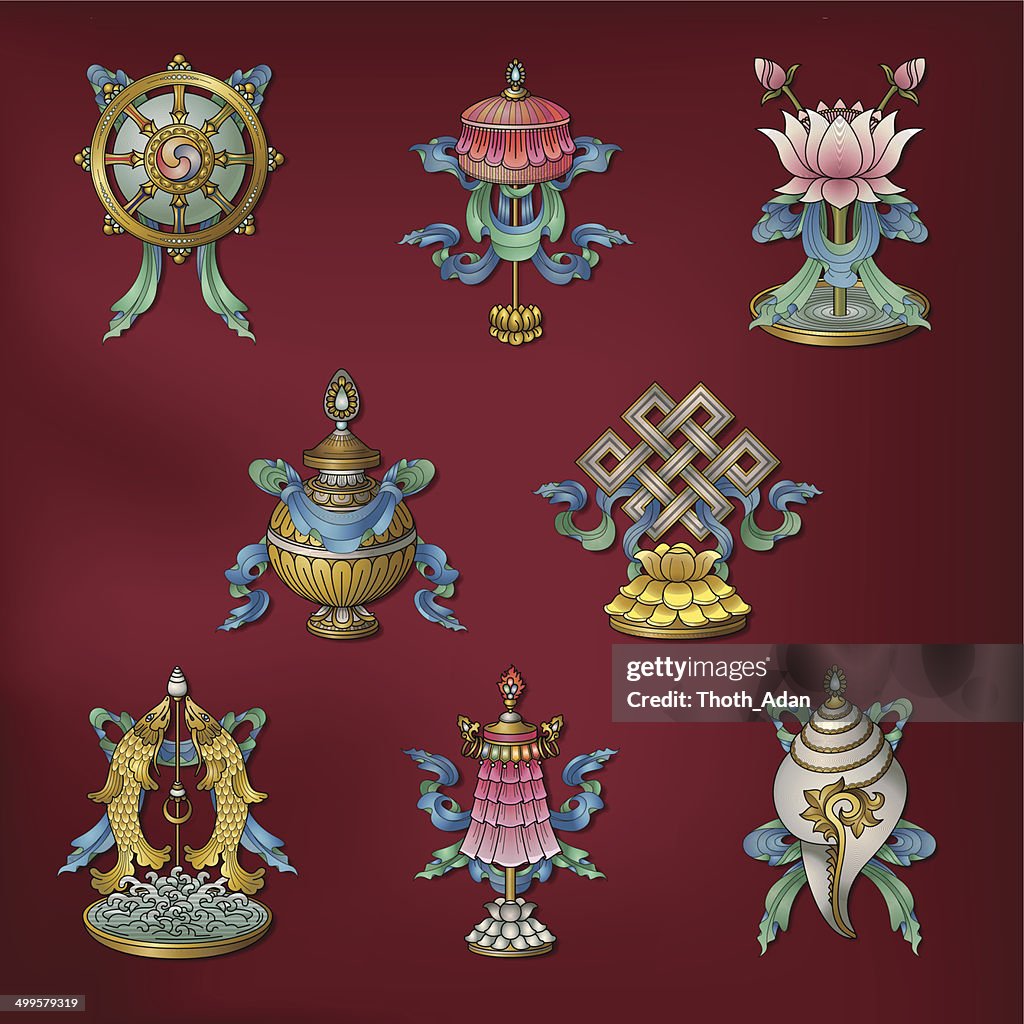
Eight Auspicious Signs Ashtamangala HighRes Vector Graphic Getty Images
Golden Fish The golden fish symbolises the auspiciousness of all living beings in a state of fearlessness, without danger of drowning in the ocean of sufferings, and migrating from place to place freely and spontaneously, just as fish swim freely without fear through water. Dharma Wheel

The Eight Auspicious Symbols. Represents the offerings to Shakyamuni Buddha
What Do the Eight Auspicious Symbols Mean? The Ashtamangala are a set of eight auspicious symbols that have been used in Buddhist traditions for centuries. They represent some of the most important aspects of Tibetan Buddhist teaching, including wisdom, compassion, and fearlessness.

Buddhist Symbolism The 8 Auspicious Symbols Of och fler bilder på
aṣṭamaṅgala, eight auspicious symbols frequently represented on Jaina ritual objects. Aṣṭamaṅgala s are common to both the Śvetāmbara and Digambara sects and are found on 1st-century- ad votive slabs and in miniature paintings, as well as being employed in Jaina worship today. In the modern Jaina temple they are seen carved on the offering stands.
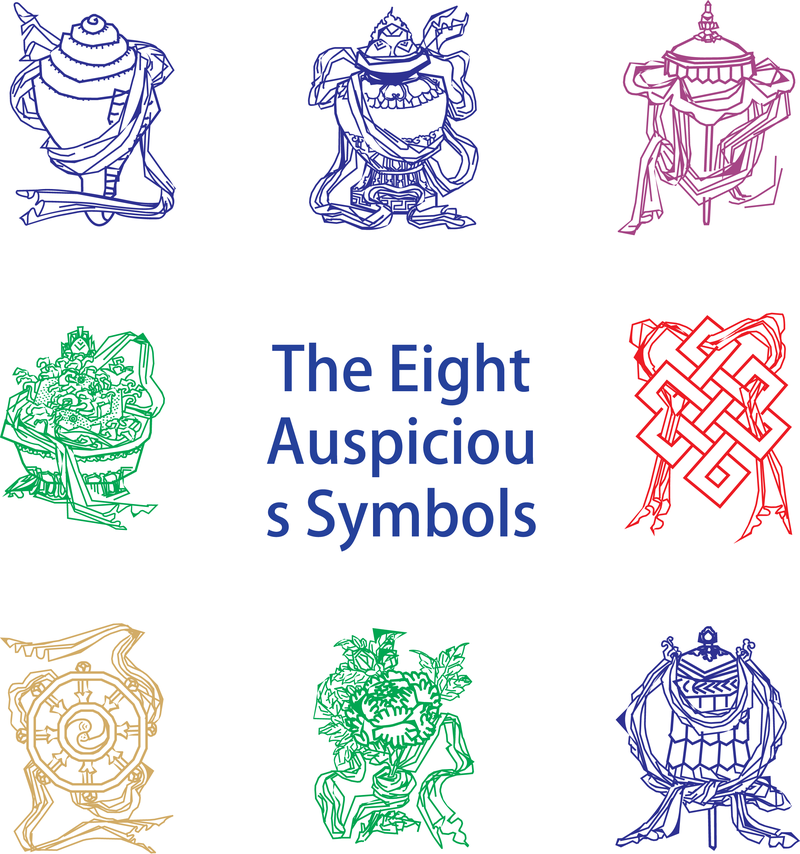
Eight Auspicious Symbols Vector Graphic Vector download
There are eight different auspicious symbols of Buddhism, and many say that these signify the gifts that God made to the Buddha when he achieved nirvana. Let us talk about these 8 different auspicious symbols of Buddhism. The Parasol
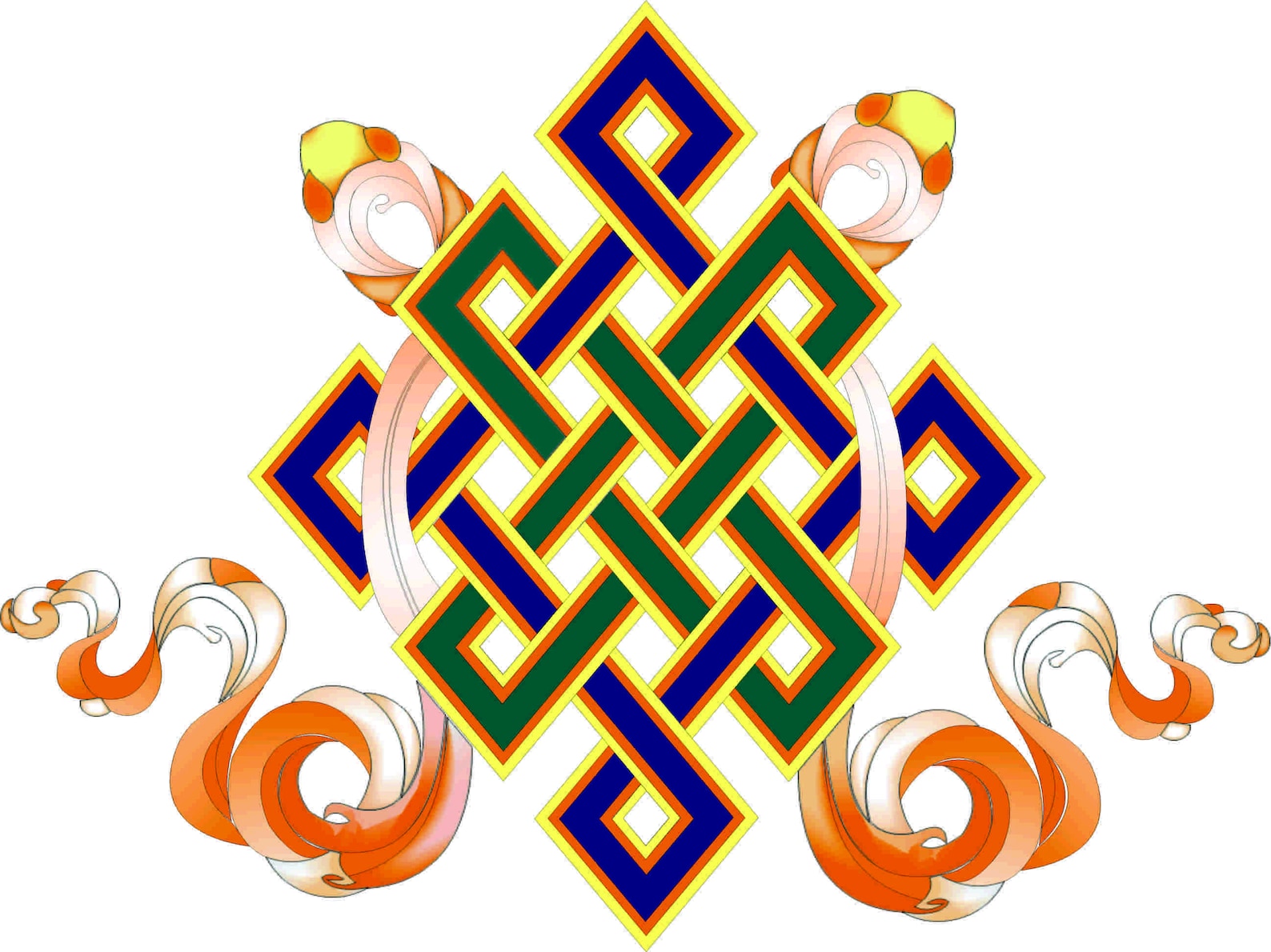
Eight auspicious symbols Buddhism Tibetan pdf Etsy
(Bio below.) The Ashtamangala: Eight Auspicious Symbols of the Buddha. The Conch The Conch is one of the Ashtamangala — it is a "right whorl" conch only. In terms of "body symbolism" it is the symbol of "Teeth" This symbol, of a white, right-turning conch shell, is representative of the deep, melodious and interpenetrating sound of the dharma.

Eight Auspicious Symbol Thangka Painting Hand Painted Etsy
The 8 Auspicious Symbols in Tibetan Buddhism. The Eight Auspicious Symbols is the most famous set of symbols in Tibetan Buddhism. More information will be added to this page. Short explanation of the Tibetan Symbols of Luck: Endless Knot. The Endless Knot (or Eternal Knot) has no beginning and no end.

Eight Auspicious Symbols with frame Painting by Carmen Mensink Pixels
The eight auspicious signs are the umbrella, yellow fish, vase, lotus, white conch shell, glorious peu, 1 banner and Dharma chakra. Here is the meaning of these eight auspicious signs according to my root guru, His Holiness Trijang Dorje Chang's explanation. 2 1.
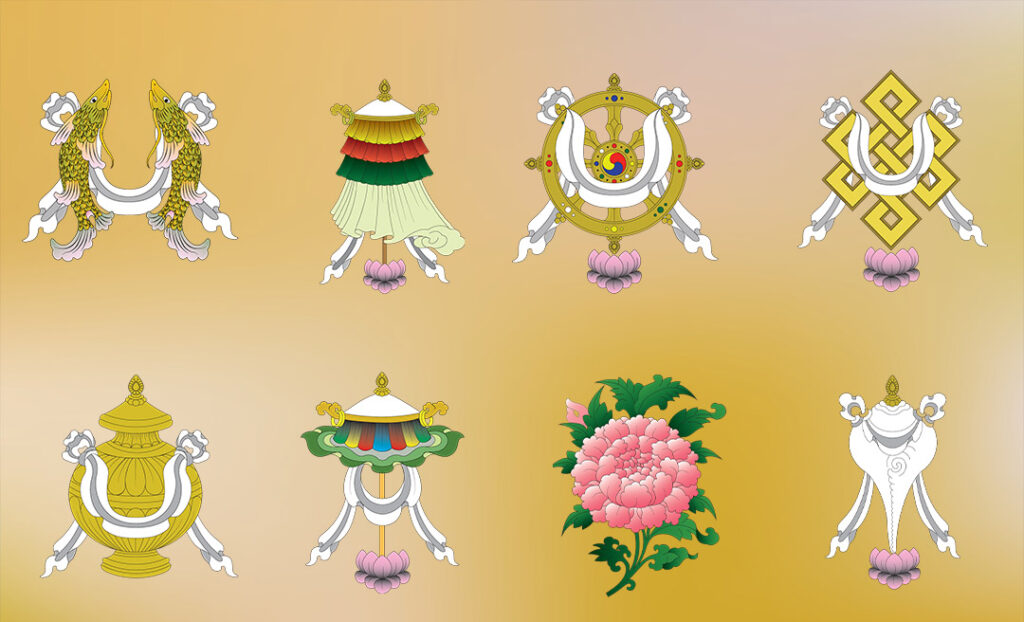
Eight Auspicious Symbols Lucky symbols of Tibet Tibet Universal Travel
The Eight Auspicious Symbols 1. Right-coiled White Conch: The white conch which coils to the right symbolises the deep, far-reaching and melodious sound of the Dharma teachings, which being appropriate to different natures, predispositions and aspirations of disciples, awakens them from the deep slumber of ignorance and urges them to accomplish their own and others' welfare.

Collection of Eight Auspicious Symbols of Buddhism As Circle on Black Cosmic Texture Stock
The Eight Auspicious Symbols or Ashtamangala in Sanskrit are a series of eight basic Buddhist Symbols that represent the teaching of the Buddha and important spiritual concepts at the core of the Buddhist philosophy.
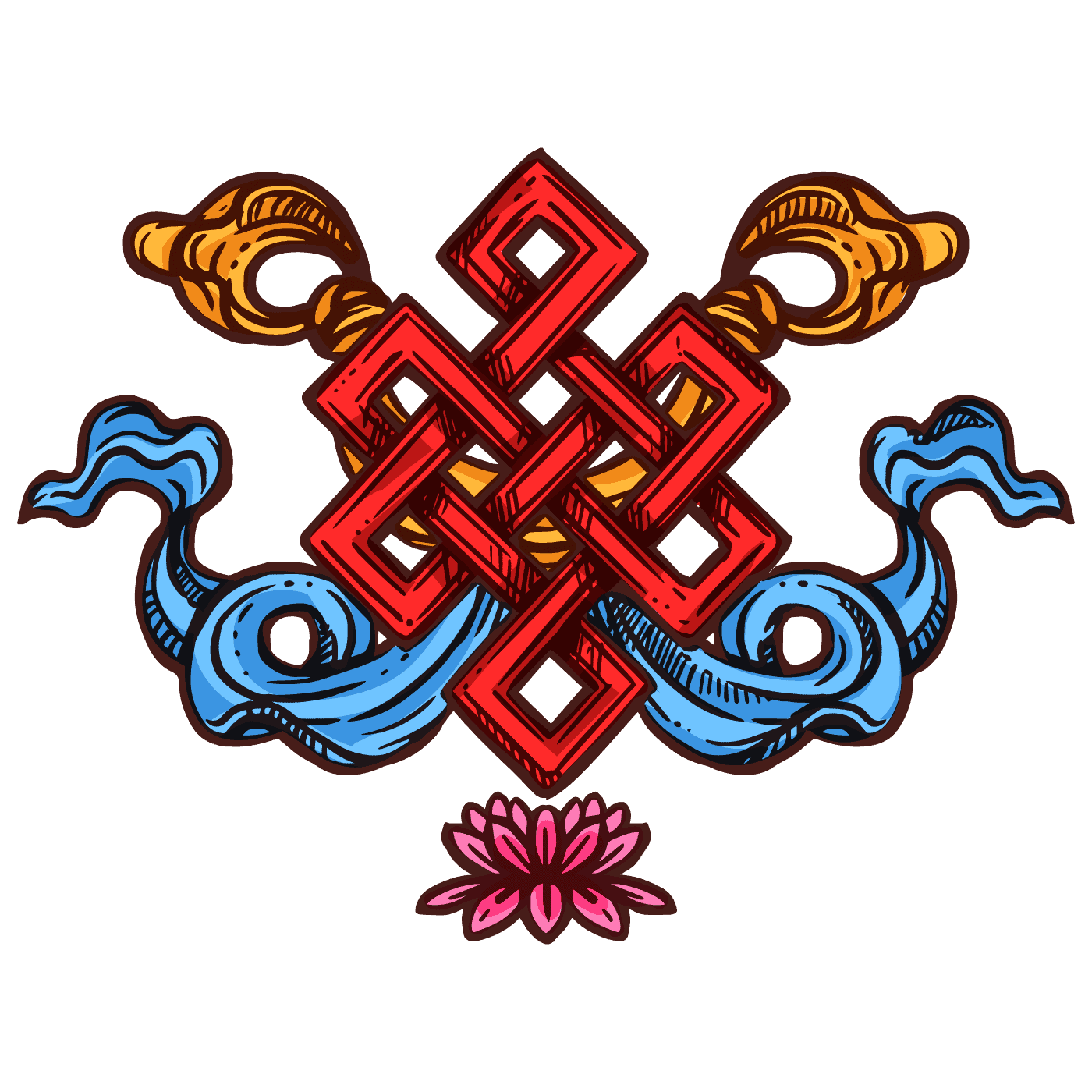
Tibetan Buddhist Symbols And Their Meanings
Eight Auspicious Symbols | Conch, Dharma wheel, Lotus flower, etc. 1. Conch In Buddhism a white conch that coils to the right symbolizes the renown of the Buddha's teachings. Its melodious sound of Dharma reaches far and wide and accords with beings' different natures, awakening them from the deep lumber of ignorance.

The Eight Auspicious Symbols of Buddhism And Their Meanings
The term ' eight auspicious symbols ' refers to a set of eight shapes or objects highly respected by the Jains and which they use in various religious contexts. The word commonly used to refer to it is the Sanskrit compound aṣṭa-mangala.

8 best Eight Auspicious Symbols images on Pinterest Buddha art, Buddhist art and Tibetan art
Groupings of Eight auspicious symbols were originally used in India at ceremonies such as an investiture or coronation of a king. An early grouping of symbols included: throne, swastika, handprint, hooked knot, vase of jewels, water libation flask, pair of fishes, lidded bowl.

The Eight Auspicious Signs Mandala Publications
The eight auspicious symbols (Skt. aṣṭamaṅgala; T. bkra shis rtags brgyad བཀྲ་ཤིས་རྟགས་བརྒྱད་; C. ba jixiang 八吉祥) are a set of eight symbols of good fortune that are found in Buddhism and other Indian traditions. The symbols are particularly popular in Tibet and Nepal, and to a lesser extent in China. [1]
/sb10068888cr-001-58b5a4133df78cdcd88353e6.jpg)
About the Eight Auspicious Symbols of Buddhism
There are eight auspicious symbols in Buddhism, which are also known as "the eight symbols of good fortune in Buddhism", underlining the importance of achieving enlightenment through various teachings of Buddha. The Eight Auspicious Symbols of Buddhism by Uliabond Contents show The Origins of The Eight Auspicious Symbols of Buddhism
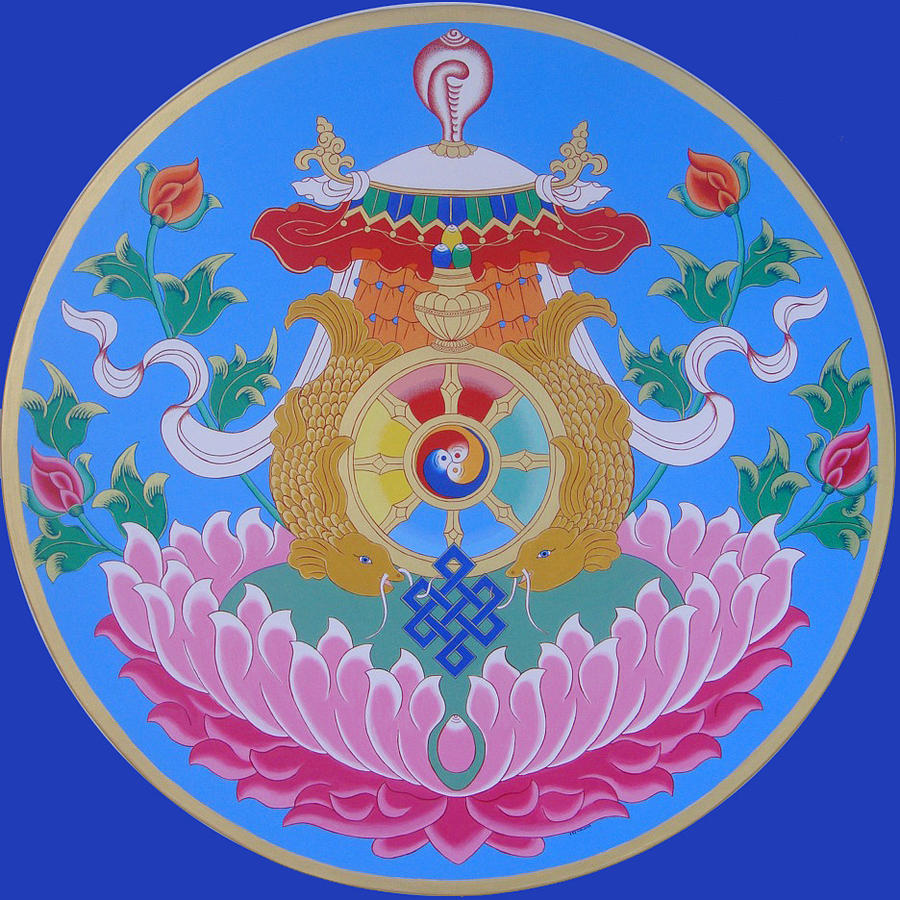
Eight Auspicious Symbols Painting by Ies Walker
1) Wheel The wheel is also known as the Dharmachakra. And also have various aliases including the Wheel of Life, Wheel of the Cosmos, Wheel of Truth, etc. It is the epitome of wisdom and nobility. Many people display wheels at home without knowing they carry very profound meaning within. 2) Conch
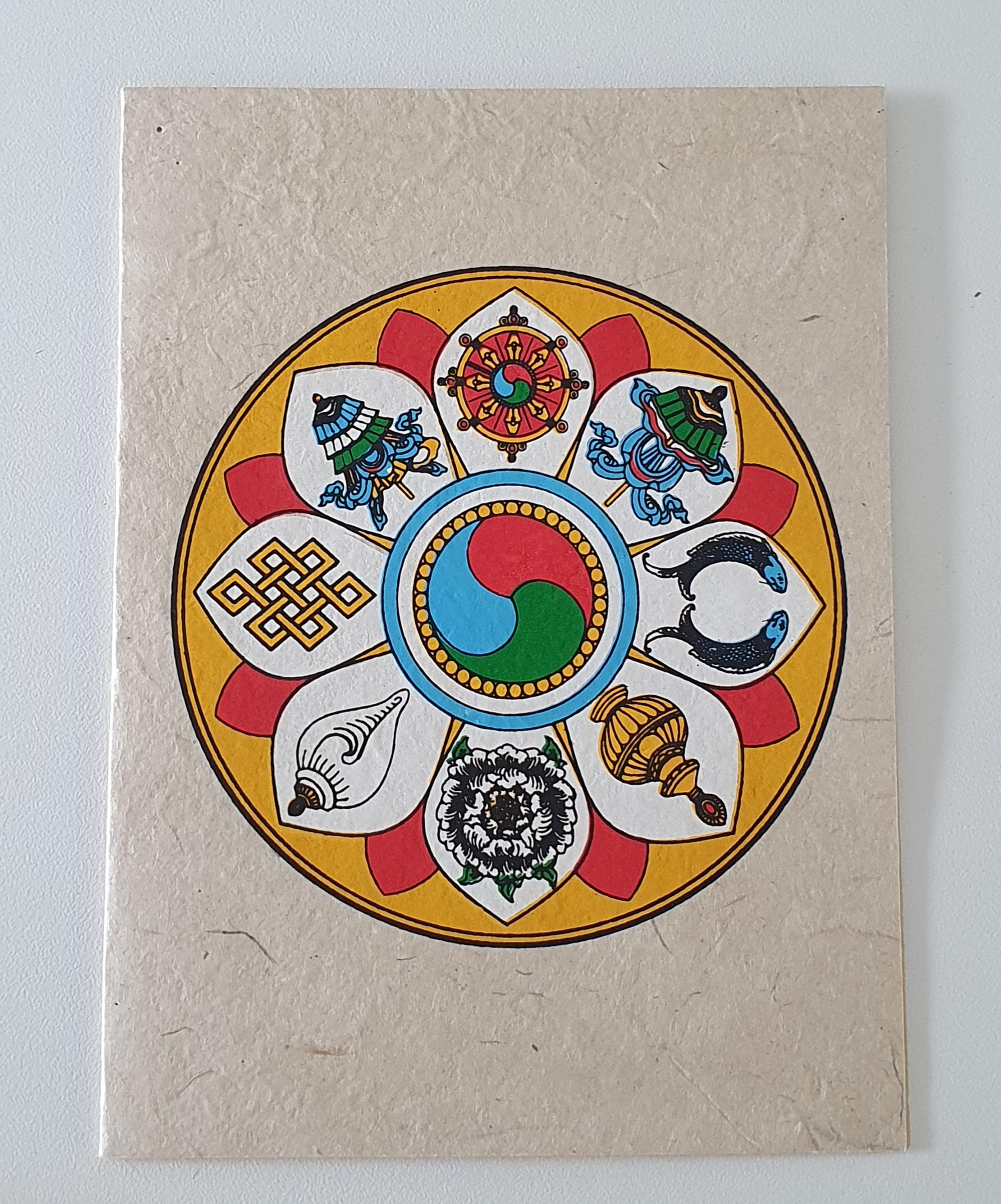
Hand Printed Eight Auspicious Symbols Cards
The Eight Auspicious Symbols or Signs of Good Fortune, known as "Ashtamangala" in Sanskrit, are very popular in Tibet and China and are found in temples and on dharma instruments, banners, doors, brocades, rugs, and many items. They represent particular teachings of the Buddha and as such serve to grant auspiciousness or good fortune to.